It is as Keats wrote, ‘the season of mist and mellow fruitfulness’. Autumn, a visual celebration of colour and fruitful abundance and a time where we can reflect upon the symbolism of fruit motif in our antique chimneypieces.
Seasons of mist and mellow fruitfulness: fruit motif in antique chimneypieces.
12 October 2017
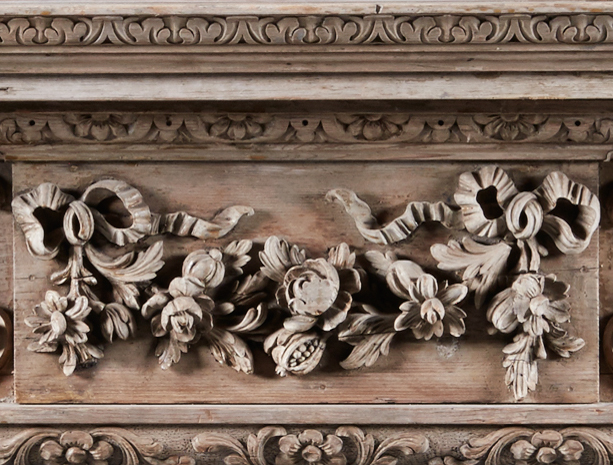
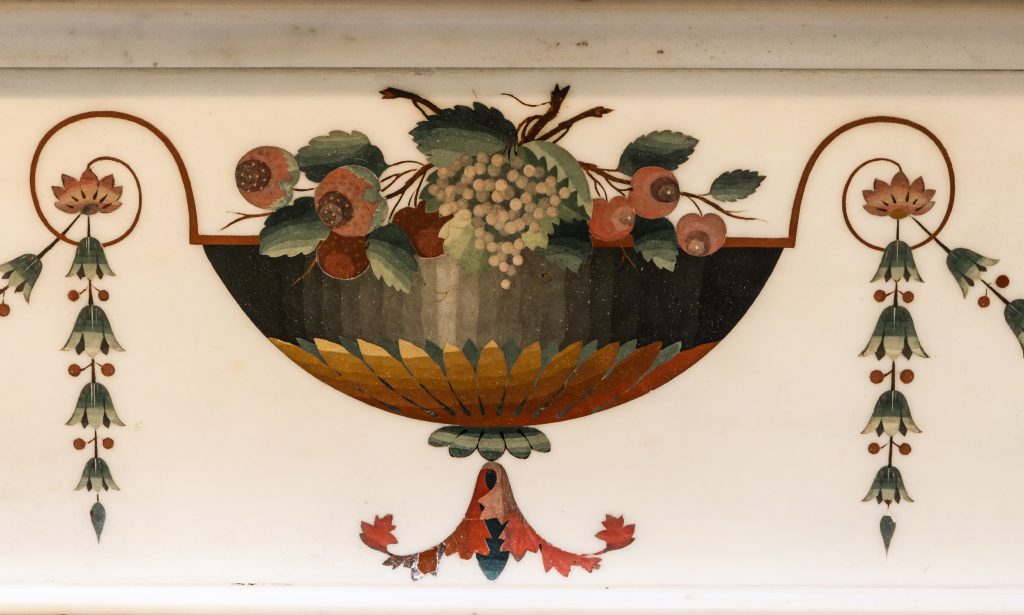
The magnificent craftsmanship attributed to Pietro Bossi is illustrated above. In this exquisite 18th century Irish mantel, the central tablet overflows with grapes and strawberries. Strawberries symbolise rebirth and Spring and within some Pagan traditions, Love as the fruit is associated with the Goddess Venus.
The chimneypiece is the focal point of any room and the central tablet the focal point of the chimneypiece. Both in symbolism and design the use of naturalistic carving depicting fruits has a soothing aesthetic. The motif of fruitful abundance is finely depicted in many of the antique chimneypieces that we own and to understand the symbolism behind the inspiration we look to the ancients, as they were the first to use fruits and flowers in architectural decoration.
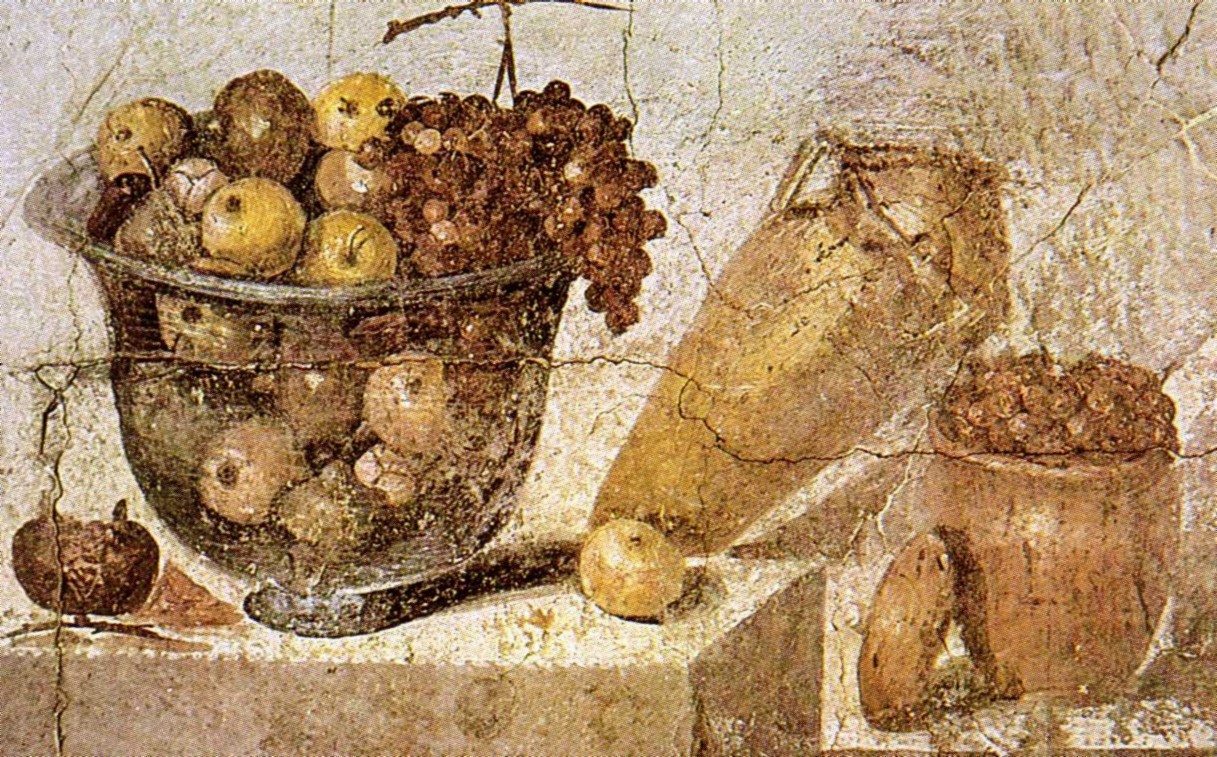
A still life of fruits and wine in the House of Julia Felix in Pompeii.
The emblema of fruits first celebrated by the Ancient Greeks and Romans in art and sculpture are notably symbolic of fertility, prosperity and wealth. Elaborate murals and mosaics were designed on the walls and floors as a sign of hospitality and display of wealth. Grapes are a recurring theme in Romanesque Art, symbolising prosperity and pleasure, a welcoming sign to anyone who walks through the door.
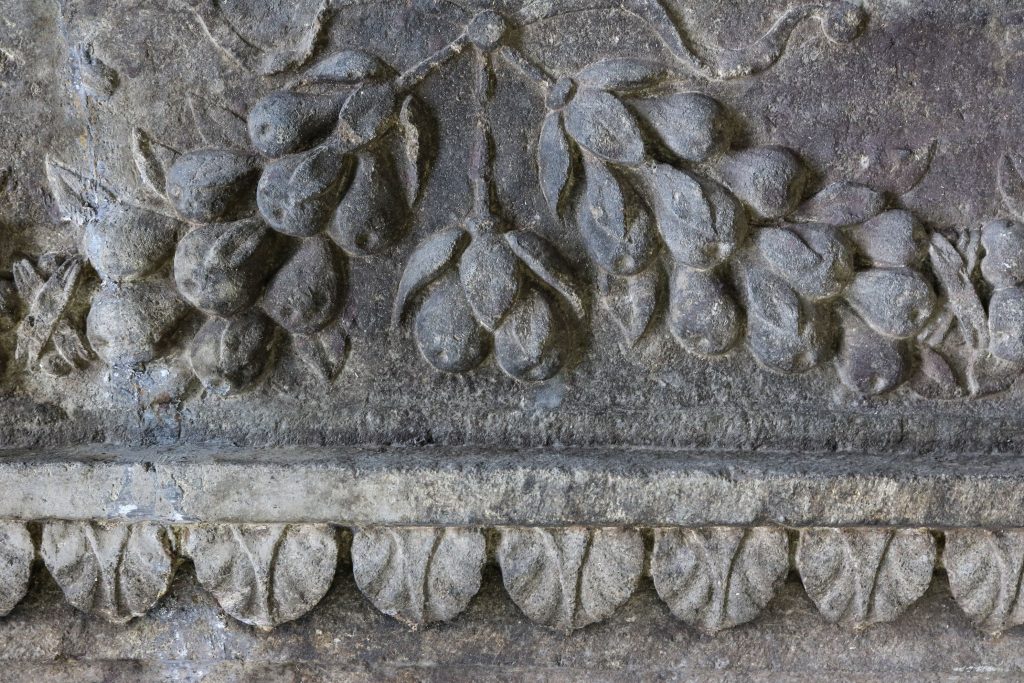
One of our oldest chimneypieces in our collection: A 16th Century Italian stone mantel with carvings of grapes.
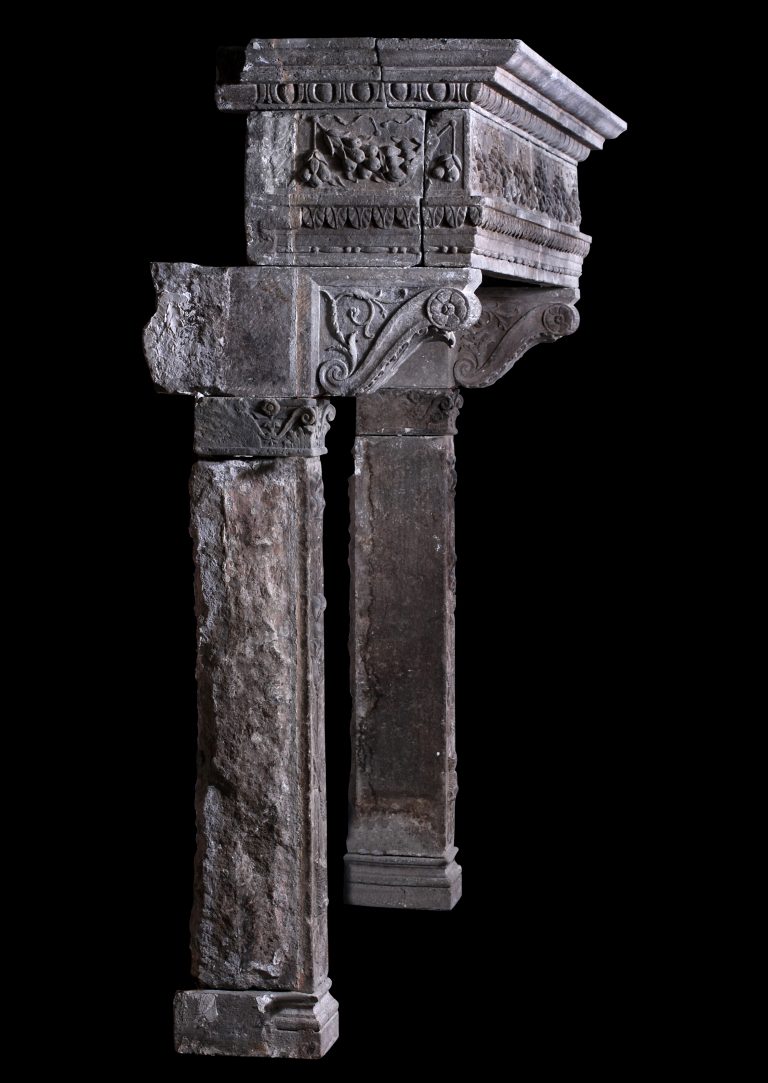
The magnificent stone mantel in its entirety.
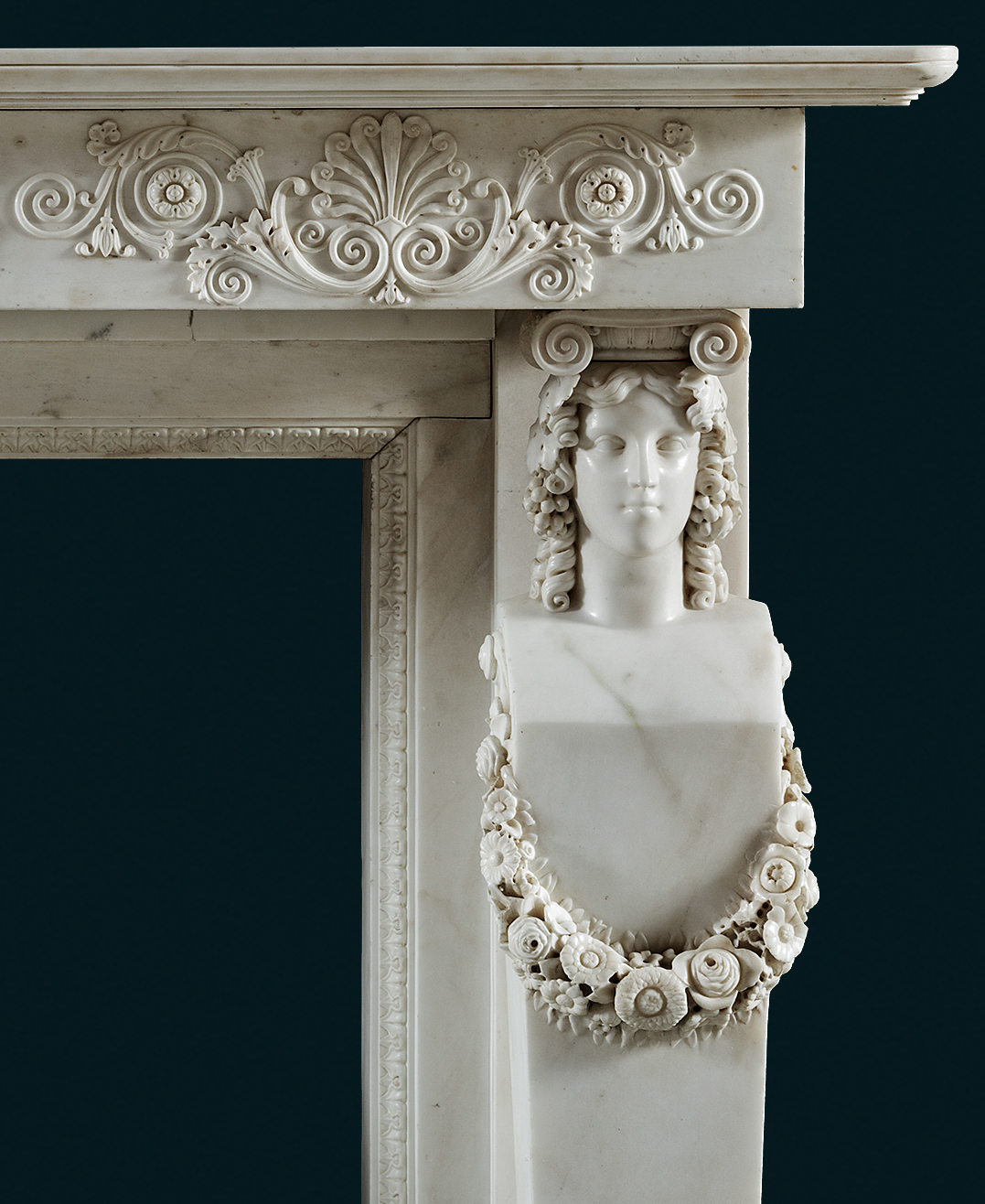
A good early 19th Century Regency Greek Revival mantel above. The hair of the Bacchic female term is entwined with vines and bunches of grapes and garlands of flowers.

Another illustration of 18th Century scagliola above, attributed to Pietro Bossi. Swaths of bunches of grapes in varying tones adorn this antique mantelpiece.

In the tablet of this 19th Century pine chimneypiece above, a pomegranate is the fruit motif, surrounded by swags of full open flowers and leaves. The pomegranate is a fascinating symbol. According to Buddhism, it is one of the three blessed fruits and in Ancient Egypt it was so revered that the pomegranate is found on many wall paintings in tombs to symbolise rebirth and life after death. It is depicted in many Roman mosaics to symbolise fertility, good luck and union as married women in Rome wore headdresses created from pomegranate twigs to signify their marital status.

It is interesting also to reflect upon Ancient Greek mythology as we step into Winter as the pomegranate is detrimental in the ancient’s explanation of how the seasons came to be. When Persephone, the goddess of the underworld, was kidnapped by Hades, her mother, Demeter, goddess of the Harvest, went into mourning and all things ceased to grow. Zeus, the king of the gods, would not allow the Earth to die, so ordered Hades to return Persephone. Before doing so, Hades offered a pomegranate to Persephone, from which she ate six seeds, creating an eternal binding to him. Even though she was allowed to leave the underworld to be reunited with her mother for a part of the year, marking the beginning of Spring, she always had to return to the underworld, where once again Winter would begin.



